Operation Léopard
Sous-titre
A humanitarian intervention - Kolwezi, 17 May to 16 June 1978
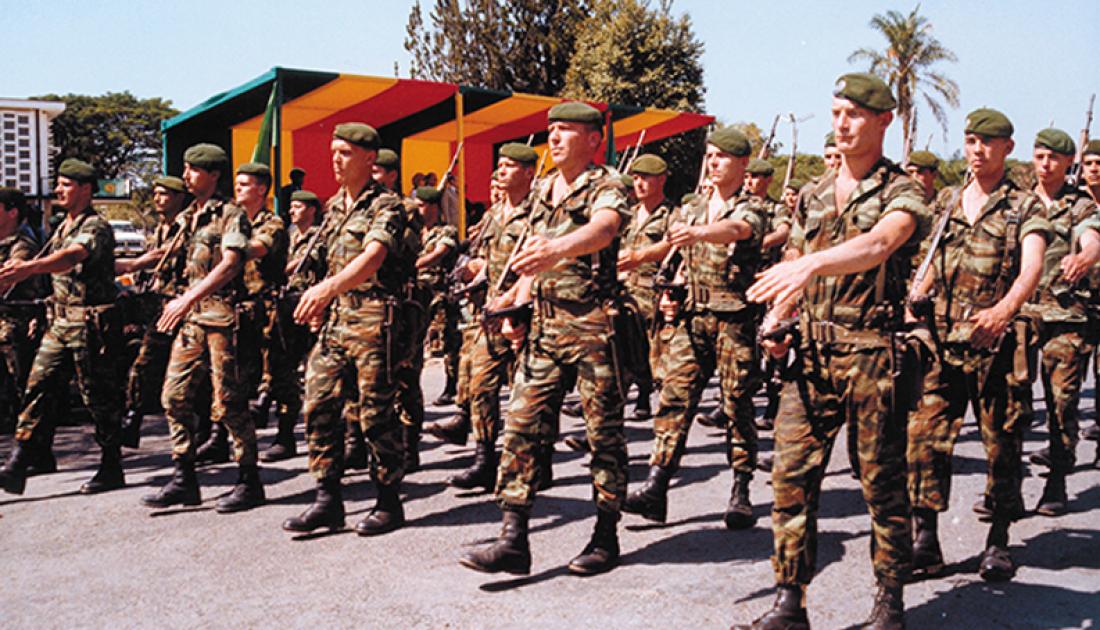
Under the defence, cooperation and assistance agreements signed with foreign countries, France has a commitment to intervene outside its borders. In 1978, it had a 20 000-strong intervention force comprised of the 11th Parachute Division, the 9th Marine Infantry Division and naval and air forces. The professional regiments of the 11th Parachute Division were alternately put on standby, codenamed ”Guépard”, so that they could be deployed without warning as required.
Kolwezi fell on 13 May. The rebels immediately set about plundering and massacring. The very next day, General Mobutu appealed to the international community for help. The United States did not want to get involved; Belgium was hesitant to do so.
Meanwhile, the French ambassador, André Ross, and the head of the French military assistance mission, Colonel Gras, informed Paris of the events and repeatedly asked the French government to intervene to stop the massacres. The Belgian community in Shaba, concerned about its safety, similarly appealed to the Belgium to step in.
Given the urgency, Colonel Gras pressed General Mobutu to send members of the 311th Parachute Battalion, trained by French instructors, to guard the Lualaba bridge, the only link between Shaba Province and the rest of the country.
But the situation in Kolwezi got steadily worse. As the abuses committed by the rebels continued, the military situation became increasingly confused: Mobutu attempted, without success, to take back the city with the remaining members of the 311th Parachute Battalion left in the area; meanwhile, the members of that same battalion sent to guard the Lualaba bridge exceeded their objective and seized Kolwezi airport.
Although it was difficult to tell precisely the number of Katangese, it seemed a shock operation, resting on the surprise caused by the arrival of several hundred parachutists in the city, might work. French president Giscard d'Estaing therefore took the decision to deploy a parachute unit. In May 1978, the 2nd Foreign Parachute Regiment, commanded by Colonel Erulin, was on ”Guépard” (standby). The operation was scheduled for 20 May.
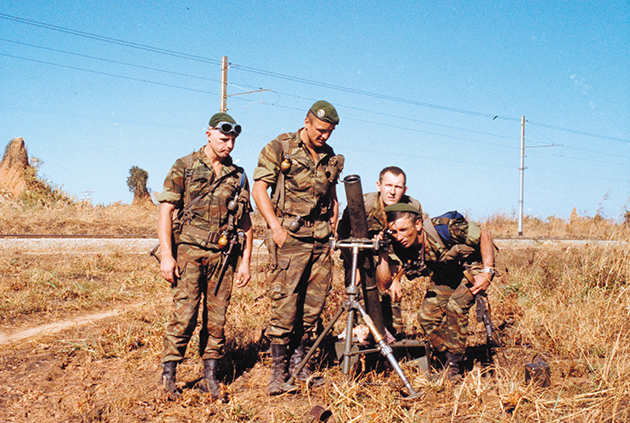
The mortar section gets in position © ECPAD
On the night of 17 to 18 May, the 2nd Foreign Parachute Regiment, on standby, boarded one French DC-8 and several US transport aircraft in Solenzara, Corsica, and a few hours later arrived in Kinshasa, the capital of Zaire, with the mission of parachuting into Kolwezi to save the Europeans..
On the 18th, while the Belgians still hesitated over the need for action, Zairean forces intercepted a message from the rebels which indicated that they were preparing to leave Kolwezi taking the Europeans with them, after first destroying its industrial facilities. They must act quickly. Colonels Gras and Erulin immediately agreed the details of the operation: the next day, equipped with American parachutes and transported by five aircraft - one French Transall C-160 and four Zairean C-130 Hercules - the legionnaires would be dropped in two waves on Kolwezi, in early afternoon and at dusk.
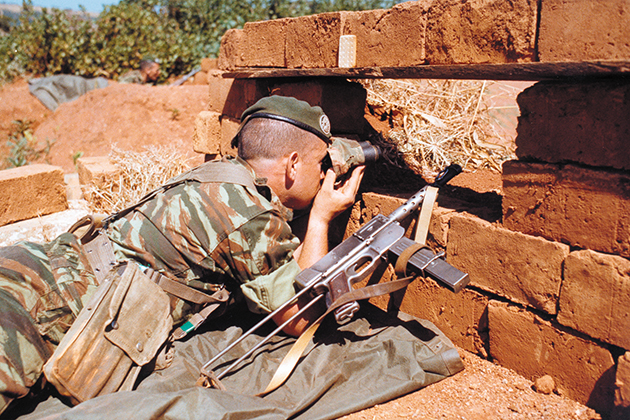
Lookout post on the outskirts of Kolwezi © ECPAD
The 1st, 2nd and 3rd Companies of the 2nd Foreign Parachute Regiment and part of the staff of the first wave were dropped on the disused airfield of a small flying club in the north of the old town, with the mission of securing that part of Kolwezi. Within one hour, despite resistance from isolated groups, the situation was under control.
The 4th Company of the 2nd Foreign Parachute Regiment, the main command, lighting section, mortar section and members of the military assistance mission of the second wave were transported by a Zairean DC-10 to Kamina, where the aircraft came to collect them, after the first wave had been dropped. Their boarding having been delayed by the arrival of Belgian parachutists sent to Zaire to repatriate their countrymen, they were dropped on the morning of the 20th on east Kolwezi, with the mission of securing the new town and the northern sector. Backed up by their comrades who were already in the city, the legionnaires took control of Kolwezi, after violent fighting around the Hotel Impala - the rebels' headquarters - and the hospital.
By the evening of the 20th, the whole of Kolwezi was secure. The Belgian parachutists arrived at the same time. In less than three days, due to the panic which had taken hold of the city's entire white population, all the Europeans were finally evacuated by the Belgians, mostly to Kinshasa.
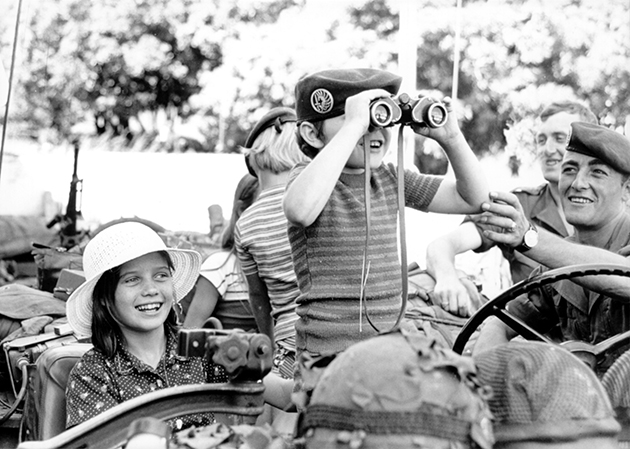
Belgian children welcome the legionnaires before being evacuated © Légion Étrangère
The legionnaires were then put in charge of maintaining security in a city emptied of its European population, its streets littered with nearly 900 dead bodies and with a Zairean population in need of aid and assistance. They carried out reconnaissance missions to the surrounding villages where the Katangese had taken refuge, to force them out of the area. After what was at times heavy fighting, particularly in Kapata and Luala, it was not long before the rebels retreated into Angola, abandoning a large quantity of their equipment.
The operation took a heavy toll. Among the military, there were five dead and 20 wounded from the 2nd Foreign Parachute Regiment, six missing from the French military mission, one dead Belgian parachutist, 14 dead and eight wounded from the Zairean 311th Parachute Battalion, and nearly 250 Katangese killed and 160 taken prisoner. Among the civilian population, approximately 120 Europeans were killed and more than 2 000 were saved. Nearly 500 Zaireans, soldiers and civilians, were killed. Many heavy weapons and several hundred rifles were recovered.
In mid-June 1978, the French in Shaba handed over to an African force comprised of troops from Morocco, Gabon, Côte d'Ivoire, Senegal and Togo, equipped by France and transported by the Americans to Lubumbashi.
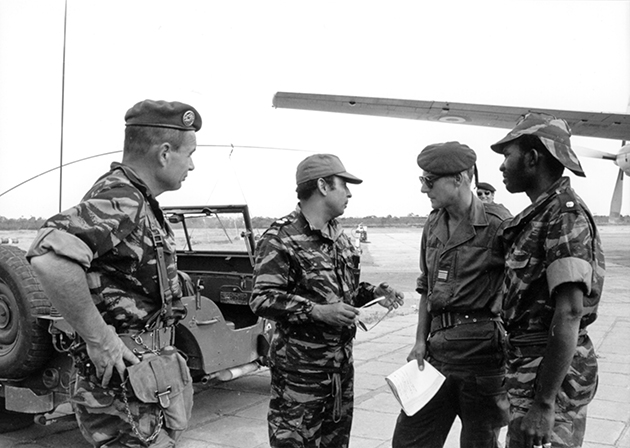
The French handover to the African force in June © ECPAD
Operation Léopard may have re-established security in Zaire, but it would take several years for economic activity in Shaba Province, and in Kolwezi in particular, to recover to pre-1978 crisis levels.
The operation on Kolwezi led to two conclusions: the long-range projection capability of the French forces was insufficient, but the operations, airborne or otherwise, carried out by professional troops were highly effective. The process of professionalisation of the armed forces, already under way, was therefore stepped up, with the creation, in 1983, of the Rapid Action Force, then the transition to professional armed forces, beginning in 1997.
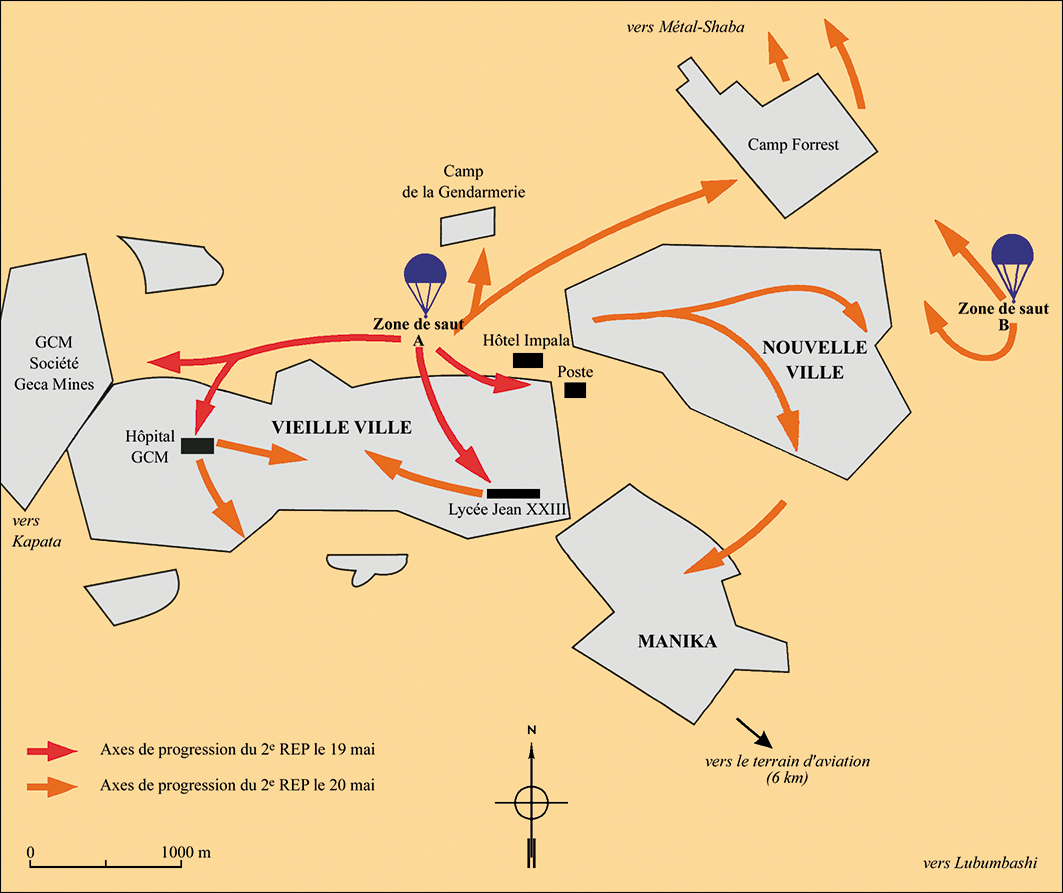
Plan de Kolwezi © Ministère de la défense/SGA/DMPA/Joëlle Rosello


